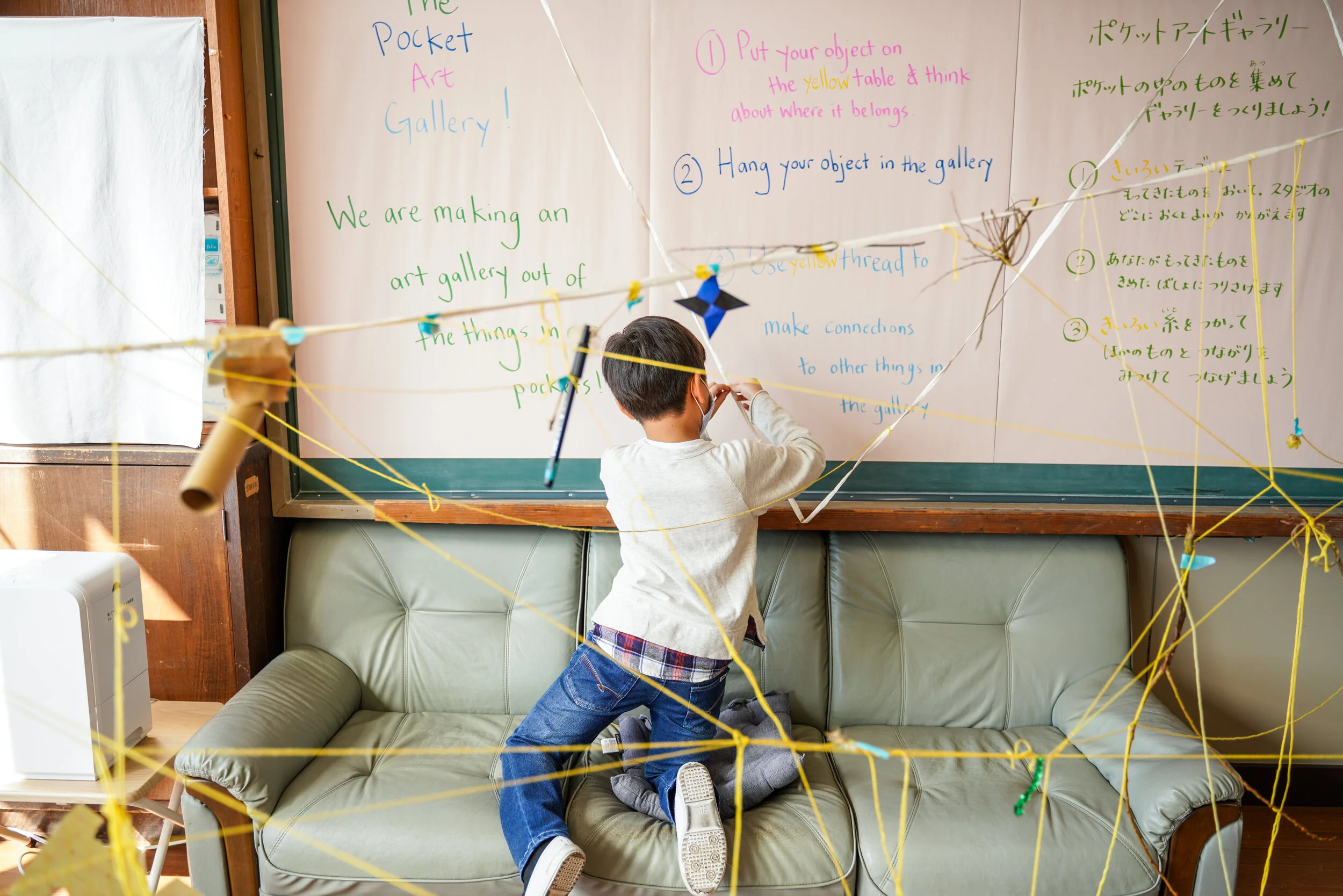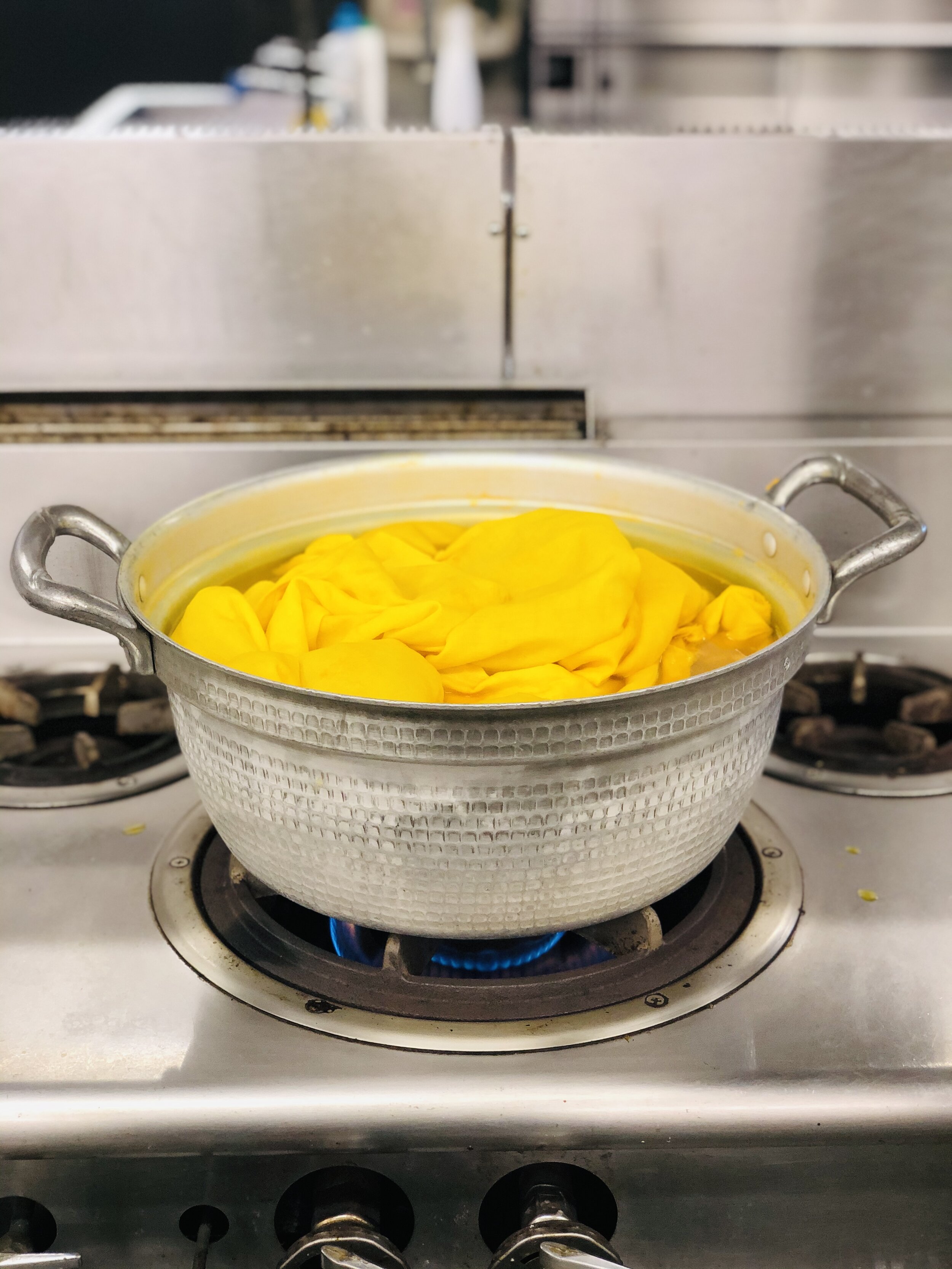Artist in Residence Spring 2021: Pocket Art Gallery
The Studio Next Door, Sanno School, 2021
At the start of the year, I joined The Studio Next Door, in the trial run of an artist in residence program being organized by Toride Art Project, Toride City Office, and Sanno Elementary School in Ibaraki. The “studio’ in the title of the project sounded exciting to me - and the opportunity to work with the ever-joyful, inspiring (and oh my goodness, the hardest-worker in town) arts administrator, Yasue Habara.
Not all artists work in studios, but for those who do - like me - it’s a very important place: for fun, experimentation, tests, failures, and thinking. It is the place we invite those people we most trust, have our favorite conversations and drink a great many cups of coffee. It is the place where we gather those parts of the world that resonate with us, to study, observe and focus attention - and so it ends up being a space that is shaped by the thoughts, connections, and things that matter most to us. So, it was the reshaping of the big, sunny classroom at Sanno School, into an artist’s studio, that we began. We took cotton thread and some tired linen, and dyed it a very happy, golden yellow using ground turmeric, and set up a table at the center of the room for the kids to empty out their pockets on to. The idea - inspired by the sticky pockets of my younger niece and nephews - was that the stuff that comes home in kids’ pockets is the stuff that caught their eye that day - and that’s pretty much how my studio works too!
Once we opened our doors to the students it was ‘next door’ that became exciting, because our neighbors; the students at Sanno School, were delightful collaborators. Their excitement at walking past a room where ‘things were happening’ soon graduated from whispers in the corridor, to peeking in, to repeat visits, asking questions, bringing in more of their treasured pocket objects, and engaging with the space. During our open days, we planned activities that would encourage the students to connect with the space through critical thinking, material literacy, and drawing exercises. We categorized objects, drew links between them with the golden thread, drew and redrew them, rolled around on the floor, and roamed up high seeking new perspectives, and sharing the experience of seeing things through each others’ eyes. The pocket objects created coordinates, and the gold thread had joined them with lines - if you closed one eye to take away your depth perception, and looked up at the collection, it was like staring up at a constellation. We all drew part of the drawing, using gold ink and sharpened chopstick ‘pens’. Later, I linked everybody’s work in a big, collaborative drawing which now hangs in the school.



























I have loved the tangle of communication and connection that came out of it this time. It largely existed (and benefitted) from being in an ‘in-between land’ of English, Japanese, and really silly physical communication; I’m always amazed by the extent to which understanding between people just happens when people want to communicate with each other, and that was magnified a million-fold by working with open-minded kids. So much connection with others is nonverbal, and so being part of the project also really addressed some of the losses I felt most keenly during the isolation of the pandemic.
I hope that joining the project has been handy for the students too! I hope it was fun, free, weird, and interesting. Longer-term, I hope it in some way supports their skills navigating life in the attention economy, where being able to determine their own values and interests is a significant skill, and spending some time thinking about what is interesting to them. I hope it bolsters their material literacy, for life in a culture that increasingly separates people from the natural world. They are stuck being the generation who must really face the issues of the world’s limited resources. How they think about and engage with the fabric of the world around them, as they face climate issues is important.
This was a simple starting point is in understanding where materials come from, how they use them, and where they will go when they are done. As educational systems transition from STEM to STEAM - conventional school systems will hopefully be involving artists more and more. Having met and worked closely with the students of Sanno school, I left feeling very hopeful - and I’m happy to say that the City Office supporting us did too: We have been given the green light to continue the project throughout the summer of 2021, and I am now looking forward to creating a garden of materials in the space, a compost heap in the corner, and a mushroom tree stump in the cupboard.

